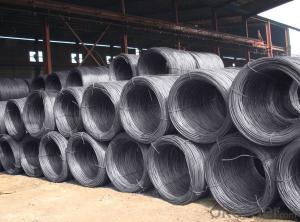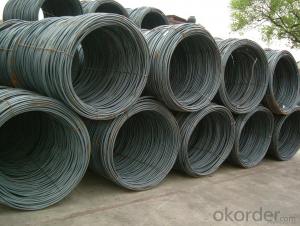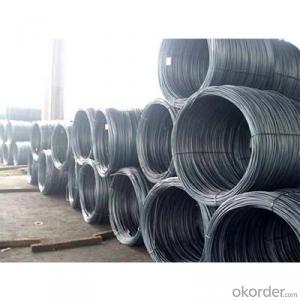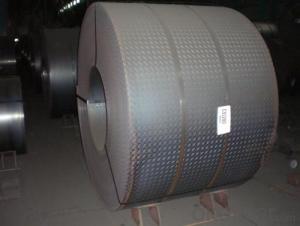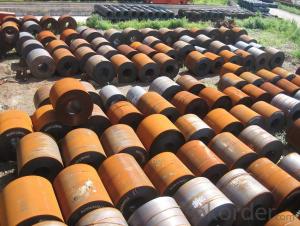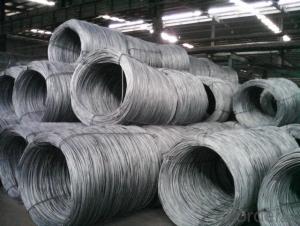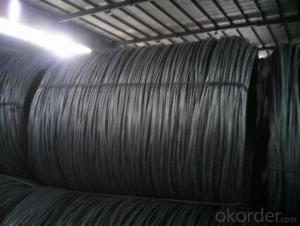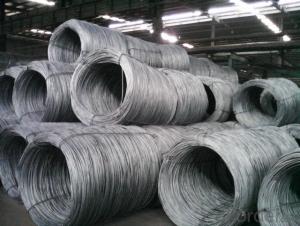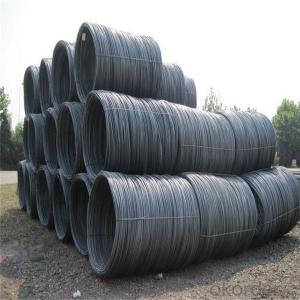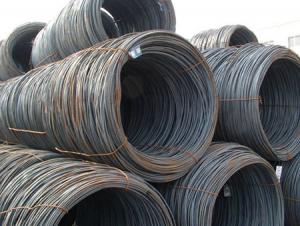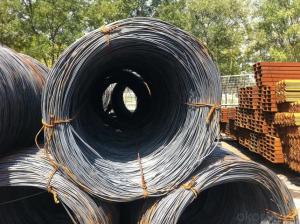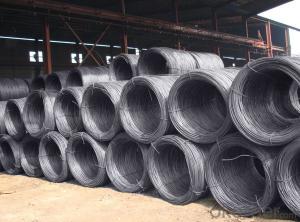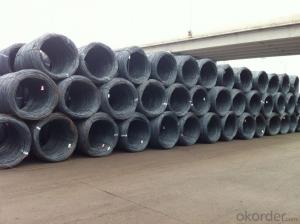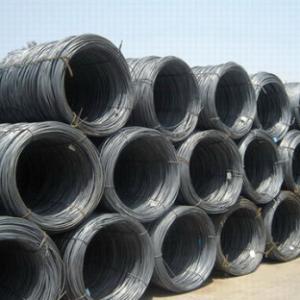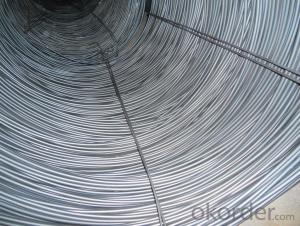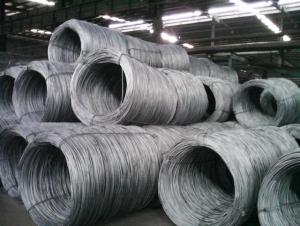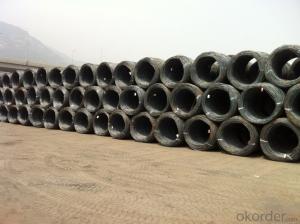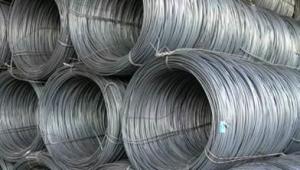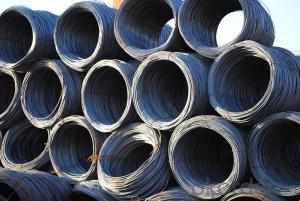High Quality Steel Wire Rod SAE1008 10mm/12mm
- Loading Port:
- Tianjin
- Payment Terms:
- TT or LC
- Min Order Qty:
- 50 m.t
- Supply Capability:
- 10000 m.t/month
OKorder Service Pledge
OKorder Financial Service
You Might Also Like
High Quality Steel Wire Rod SAE1008 10mm/12mm
Product Description:
Specifications of Wire Rod SAE1008:
Grade: SAE1008 Standard: ASTM
Diameter: 10mm/12mm
Alloy or Not: Alloy
Technique: Hot Rolled Place of Origin: China Mainland
Chemical Composition:
Please kindly find our chemistry of our material based on SAE1008 as below for your reference:
Grade | Chemical Composition (%) | |||||
C | Mn | S | P | Si | ||
SAE1008 | 0.10max | 0.32max | 0.045max | 0.040max | 0.30max | |
Mechanical properties | ||||||
Yield strength(N/mm2) | Tensile strength(N/mm2) | Elongation (%) | ||||
≥195 | 350-380 | ≥32 | ||||
Usage and Applications of High Quality Steel Wire Rod SAE1008 10mm/12mm:
After hot-rolled the products shaped into coil and delivery as finished product, including round, square,rectangular, hexagonal and so on. Since most of the products are round, it is generally called wire rod. Carbon steel wire rod is widely used in construction and manufacturing. Carbon steel wire rod is mainly used for reinforcement of reinforced concrete and welded structure or reprocessed (roberts , nail, etc.) materials, especially used to produce wire drawing, welding electrode, nails, spring, electronic, precise machinery parts and so on.
Packaging & Delivery of High Quality Steel Wire Rod SAE1008 10mm/12mm:
Packaging Detail: products are packed in coil and then shipped by container or bulk vessel
Each coil weight: About 2.05MT
Delivery Detail: within 45 days after received deposit or LC.
Label: to be specified by customer, generally, each bundle has 1-2 labels
Trade terms: FOB, CFR, CIF
FAQ:
Q1: Why buy Materials & Equipment from OKorder.com?
A1: All products offered byOKorder.com are carefully selected from China's most reliable manufacturing enterprises. Through its ISO certifications, OKorder.com adheres to the highest standards and a commitment to supply chain safety and customer satisfaction.
Q2: How do we guarantee the quality of our products?
A2: We have established an advanced quality management system which conducts strict quality tests at every step, from raw materials to the final product. At the same time, we provide extensive follow-up service assurances as required.
Q3: How soon can we receive the product after purchase?
A3: Within three days of placing an order, we will arrange production. The shipping date is dependent upon the quatity, how many sizes you want and the plan of production, but is typically 1 month to 2 month days from the beginning of production.
Images of High Quality Steel Wire Rod SAE1008 10mm/12mm:
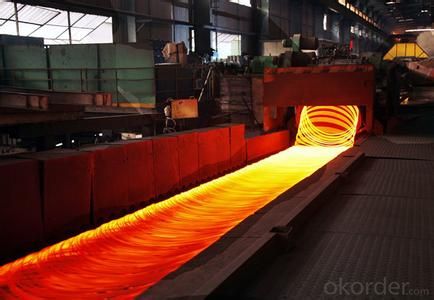
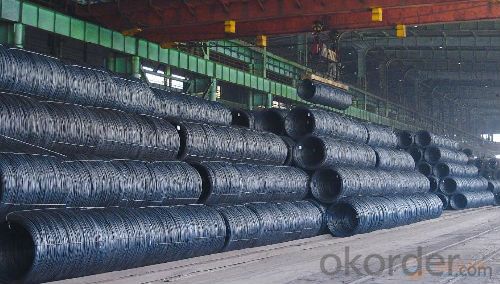
*If you would like to get our price, please inform us the size, standard/material and quantity. Thank you very much for your attention.
- Q: What are the different surface coating materials used for steel wire rod?
- Some of the different surface coating materials used for steel wire rod are zinc, copper, nickel, and epoxy. These coatings provide various benefits such as corrosion resistance, improved appearance, and enhanced durability.
- Q: How is steel wire rod used in automotive applications?
- Steel wire rods are extensively used in automotive applications due to their high strength, durability, and flexibility. They are primarily used in the manufacturing of various automotive components such as springs, cables, tires, and reinforcements. Steel wire rods are also used in seat frames, exhaust systems, and suspension systems, where their excellent tensile strength and resistance to corrosion play a crucial role in ensuring the safety and performance of vehicles. Overall, steel wire rods are an essential material in the automotive industry, contributing to the overall strength, reliability, and functionality of automobiles.
- Q: How is steel wire rod used in the manufacturing of wire mesh bins?
- Steel wire rod is a critical component in the manufacturing of wire mesh bins as it serves as the primary material for constructing the wire mesh structure. The wire rod is first drawn into thinner wires, which are then woven or welded together to form the mesh panels. This sturdy mesh provides the structural integrity and strength required to contain and store various items in wire mesh bins.
- Q: What are the different surface defects that can affect the magnetic properties of steel wire rod?
- Some of the different surface defects that can affect the magnetic properties of steel wire rods include scale, decarburization, pits, scratches, and surface roughness. These defects can disrupt the flow of magnetic flux within the wire rod, leading to decreased magnetic performance.
- Q: What are the common types of internal defects in steel wire rod?
- Some common types of internal defects in steel wire rod include inclusions, segregations, cracks, and voids. Inclusions are foreign substances that are trapped within the steel during the manufacturing process. Segregations occur when the composition of the steel is not uniform, resulting in areas with different properties. Cracks can occur due to excessive stress or improper cooling during production. Voids are empty spaces or cavities within the steel. These defects can weaken the wire rod and affect its overall quality and performance.
- Q: How is steel wire rod used in the manufacturing of wire forms for agricultural fencing?
- Steel wire rod is used in the manufacturing of wire forms for agricultural fencing by being transformed into various wire shapes and gauges. It can be straightened, cut, and then either woven or welded into the desired fence forms. The high tensile strength of steel wire rod provides durability and resistance, making it suitable for withstanding the pressure and impact that agricultural fencing may encounter.
- Q: What are the main challenges in recycling steel wire rod?
- The main challenges in recycling steel wire rod include the presence of contaminants, such as coatings or impurities, which need to be removed to ensure the quality of the recycled material. Additionally, the physical characteristics of steel wire rod, such as its shape and length, can make it difficult to handle and process efficiently during recycling. Lastly, the high energy requirements for melting and reshaping steel wire rod pose a challenge in terms of cost and environmental impact.
- Q: What are the different types of steel wire rod surface defects and their prevention methods?
- During the manufacturing process, various defects may arise on the surface of steel wire rods. These defects encompass scratches, pits, scale, cracks, and surface irregularities. The presence of any of these defects can adversely impact the quality and performance of the wire rods. Therefore, understanding the causes and employing prevention methods is crucial. 1. Scratches: Improper handling or contact with abrasive materials can lead to scratches. To prevent this, it is essential to handle the wire rods delicately and avoid contact with rough surfaces. The use of protective coverings or pads during transportation and storage can also serve as a preventive measure against scratches. 2. Pits: Pits refer to small depressions or cavities on the surface of the wire rods. They can occur due to impurities in the raw materials or the manufacturing process itself. To prevent pits, it is imperative to utilize high-quality raw materials and maintain proper cleaning and maintenance of the manufacturing equipment. 3. Scale: Scale refers to the oxide layer that forms on the wire rod surface during manufacturing, resulting in a rough and uneven surface. To prevent scale formation, it is important to control the temperature and atmosphere during the manufacturing process. Regular cleaning and maintenance of the equipment also aid in preventing scale. 4. Cracks: Excessive stress or improper cooling during manufacturing can lead to cracks. To prevent cracks, it is crucial to regulate the cooling rate and ensure proper heat treatment of the wire rods. Using appropriate lubrication during wire drawing can also reduce stress and prevent cracks. 5. Surface irregularities: Surface irregularities include bumps, dents, or unevenness on the wire rod surface. These irregularities can arise due to mishandling or issues with the manufacturing equipment. To prevent such irregularities, one must handle the wire rods with care and maintain and calibrate the manufacturing equipment properly. In conclusion, the manufacturing process of steel wire rods can give rise to several surface defects. To prevent these defects, careful handling of the wire rods, utilization of high-quality raw materials, regular maintenance and cleaning of the manufacturing equipment, control of temperature and atmosphere, and proper heat treatment and lubrication are essential. Implementing these prevention methods can greatly enhance the quality and performance of the steel wire rods.
- Q: How is steel wire rod used in the production of suspension springs for railway vehicles?
- Steel wire rod is used in the production of suspension springs for railway vehicles as it provides the necessary strength and durability required to withstand the heavy loads and constant vibrations experienced in rail operations. The steel wire rod is first shaped and coiled into the desired spring design, ensuring proper tension and flexibility. These suspension springs are then integrated into the suspension system of railway vehicles, helping to absorb shocks, maintain stability, and provide a smooth and comfortable ride for passengers and cargo.
- Q: What are the different grain size measurement methods for steel wire rod?
- There are several different grain size measurement methods commonly used for steel wire rod. These methods provide important information about the microstructure and mechanical properties of the steel. One widely used method is the ASTM E112 standard, which involves the use of a microscope to measure the average grain size. This method requires preparing a metallographic sample, polishing it to a mirror-like finish, and etching it to reveal the grain boundaries. The sample is then examined under a microscope, and the grain boundaries are traced and counted to determine the average grain size. Another method is the Sieve Analysis method, which is commonly used for determining the grain size distribution in steel wire rod. In this method, a representative sample of the wire rod is sieved through a series of progressively smaller mesh sieves. The weight of material retained on each sieve is measured, and the grain size distribution is determined based on the percentage of material retained on each sieve. The Laser Diffraction method is another commonly used technique for measuring grain size in steel wire rod. In this method, a laser beam is directed through a suspension of the wire rod particles, and the scattering pattern is measured. The size of the particles can be determined based on the diffraction pattern, allowing for the calculation of the grain size distribution. Other methods include the Electron Backscatter Diffraction (EBSD) method, which uses an electron microscope to determine the crystallographic orientation and grain boundaries in the wire rod, and the X-ray Diffraction (XRD) method, which measures the angle of diffraction of X-rays to determine the crystallographic structure and grain size. Each of these grain size measurement methods has its advantages and limitations, and the choice of method depends on factors such as the desired level of accuracy, the type of steel wire rod being analyzed, and the available equipment and expertise.
Send your message to us
High Quality Steel Wire Rod SAE1008 10mm/12mm
- Loading Port:
- Tianjin
- Payment Terms:
- TT or LC
- Min Order Qty:
- 50 m.t
- Supply Capability:
- 10000 m.t/month
OKorder Service Pledge
OKorder Financial Service
Similar products
Hot products
Hot Searches
Related keywords
